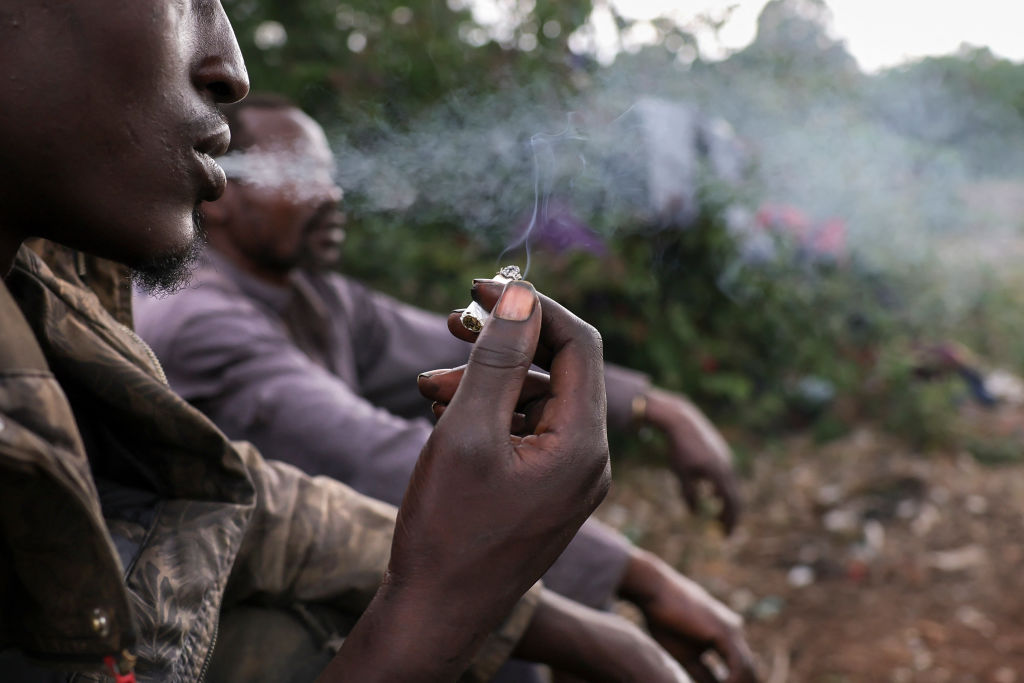Africa accounted for 57% of the total quantity of pharmaceutical opioids seized worldwide between 2019 and 2023, according to a new report by the United Nations Office on Drugs and Crime (UNODC). The estimated use of opioids on the continent was highest in Central and West Africa.
The UNODC’s 2025 World Drug Report shows that although Africa remains a transit hub for drugs headed to other regions, drugs increasingly are consumed on the continent, particularly cannabis — Africa’s most trafficked, sourced and sold drug — as well as cocaine, heroin, methamphetamine and synthetic drugs. Statistics in the report were compiled in 2024 and represent levels of drug abuse and trafficking in 2023.
Drug trafficking routes often are run by organized crime organizations that exploit war zones and areas with gaps in law enforcement, according to the UNODC.
The continent is experiencing a gradual shift from cannabis-dominated markets — about 10% of the population used cannabis in 2023 — to more diversified and dangerous drug ecosystems. Cocaine seizures linked to Africa increased by 48% from 2022 to 2023, and treatment data suggest cocaine use is rising, particularly in Central and West Africa. This coincided with record production levels that drove traffickers into new markets.
“Cocaine is … emerging as a harmful drug in the region, with people starting to enter drug treatment for dependence and drug use disorders due to its use,” the report said. “Heroin use and heroin use disorders are also an issue, especially in East Africa, North Africa and some parts of Southern Africa.”
Amid worsening macroeconomic conditions, lower-income countries have struggled to fund public health measures, including drug treatment.
“Without urgent and sustained investment, the consequences of untreated drug use disorders, including increased health risks, social harm and pressure on public services, will only deepen,” Amado Philip de Andrés, the UNODC regional representative for West and Central Africa, said in a news release. “With only 3.4% of the estimated number of individuals with drug use disorders receiving treatment in Africa, strengthening evidence-based, cost-effective interventions grounded in public health principles must be a priority.”
In Central and West Africa, the nonmedical use of codeine; pregabalin, which is used to treat nerve pain and some forms of seizures; and tramadol are increasing. Similar to codeine, tramadol is an opioid analgesic that is used to treat moderate to moderately severe chronic pain in adults. It is highly addictive and is not internationally controlled. It is a particular challenge in Central, North and West Africa, where it can be illegally manufactured and sold at higher doses than medical supplies.
“More than 90% of the total amount of tramadol seized by law enforcement authorities worldwide in the past five years has been seized in Africa,” the report said. “Continuing the past trend, most of the tramadol seized in Africa originates in South Asia.”
The preexisting and emerging use of drug mixtures, such as “kush,” has led to public health crises in Central and West Africa. Kush is often made with potent synthetic opioids called nitazenes, according to the Global Initiative Against Transnational Organized Crime and the Clingendael Institute. Other ingredients, such as acetone, formaldehyde, industrial solvents and tramadol are sometimes used as filler.
The drug, which looks like marijuana and can be 25 times more powerful than fentanyl, emerged in Sierra Leone but has spread to The Gambia, Ghana, Guinea-Bissau, Liberia and Senegal. Since 2022, it likely has killed thousands of people in West Africa, analysts say. Health crises caused by the drug led Liberia and Sierra Leone to declare a national emergency last year.
“Synthetic drugs have become one of the most urgent and elusive drug challenges that we face,” Ghada Waly, UNODC director-general, said in a news release. “They are evolving every day, expanding in reach and growing in potency.”
To address the complex challenges associated with illicit drug use and trafficking, the UNODC argued that criminal justice systems should devote more resources to disrupt supply chains and criminal networks. It called for law enforcement approaches that focus less on arresting local drug couriers, drivers and sellers and instead target mid-level managers, chemists and money launderers, who are harder to replace.
“Drug seizures must be followed by judicial action, along with international cooperation, intelligence-sharing, and joint operations, to ensure they lead to the dismantlement of trafficking networks rather than a displacement of the routes,” de Andrés said in a news release.

